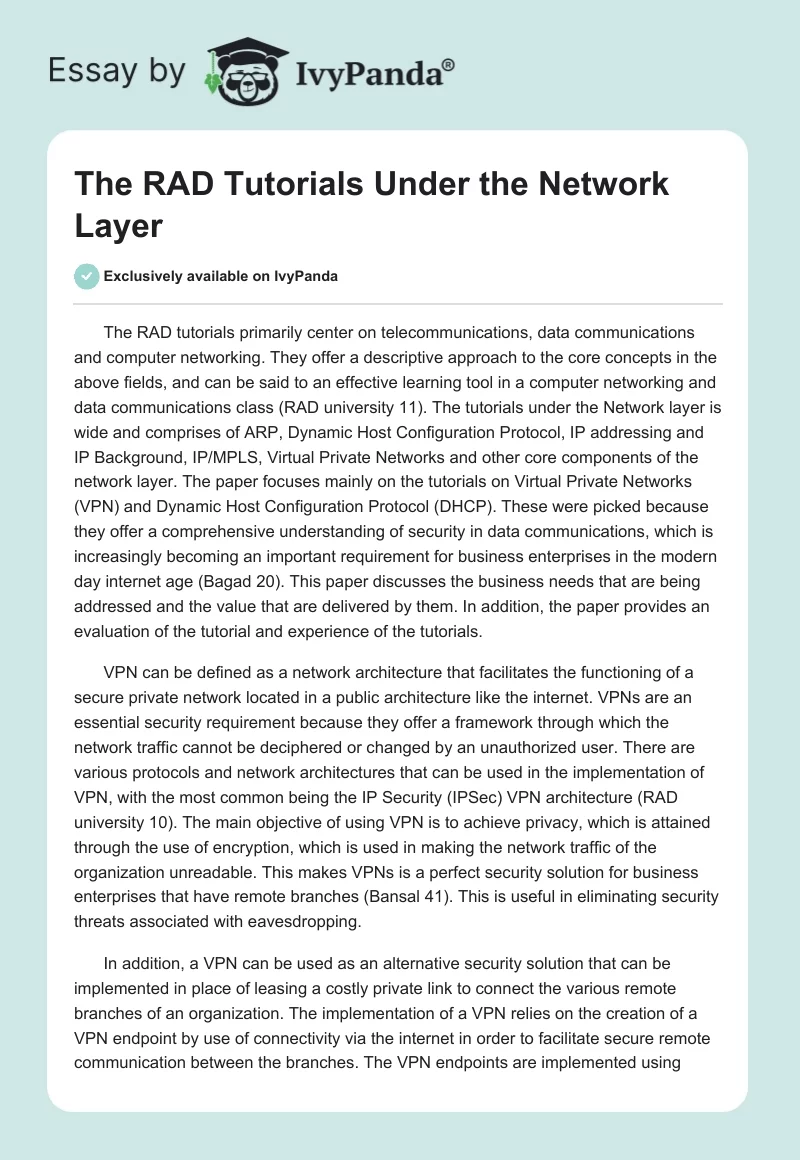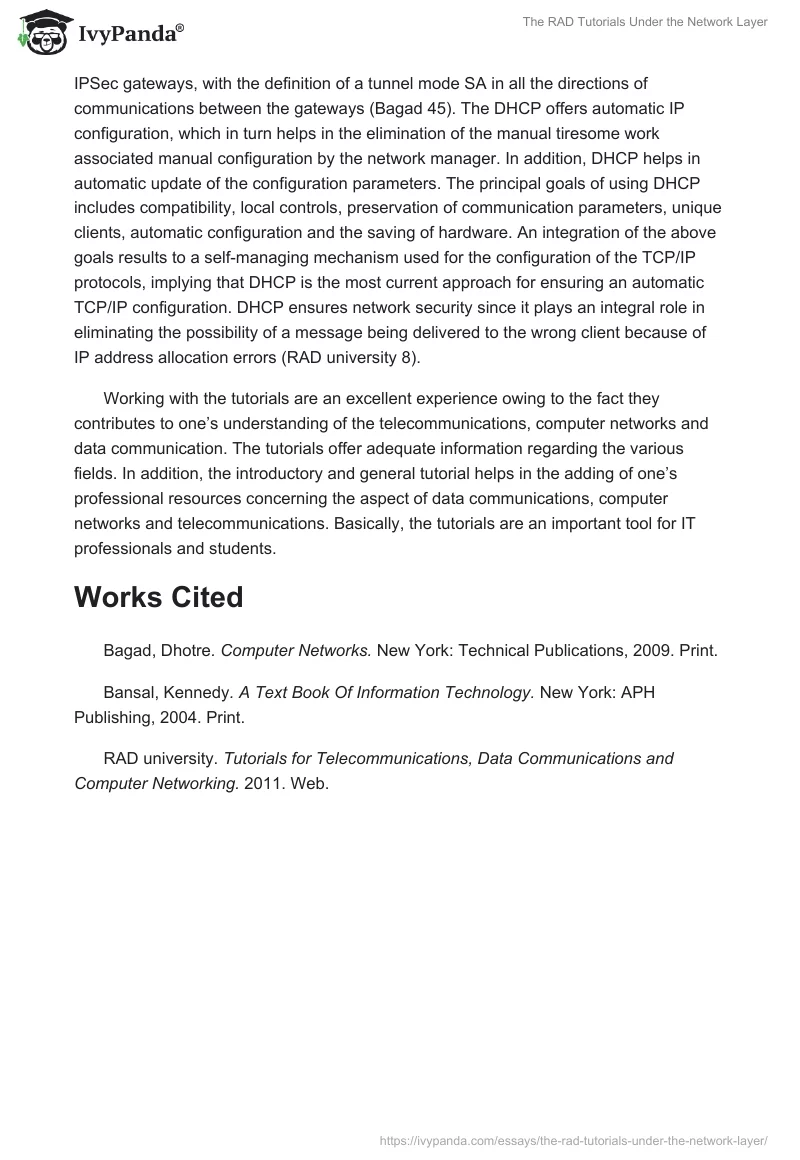The RAD tutorials primarily center on telecommunications, data communications and computer networking. They offer a descriptive approach to the core concepts in the above fields, and can be said to an effective learning tool in a computer networking and data communications class (RAD university 11). The tutorials under the Network layer is wide and comprises of ARP, Dynamic Host Configuration Protocol, IP addressing and IP Background, IP/MPLS, Virtual Private Networks and other core components of the network layer. The paper focuses mainly on the tutorials on Virtual Private Networks (VPN) and Dynamic Host Configuration Protocol (DHCP). These were picked because they offer a comprehensive understanding of security in data communications, which is increasingly becoming an important requirement for business enterprises in the modern day internet age (Bagad 20). This paper discusses the business needs that are being addressed and the value that are delivered by them. In addition, the paper provides an evaluation of the tutorial and experience of the tutorials.
VPN can be defined as a network architecture that facilitates the functioning of a secure private network located in a public architecture like the internet. VPNs are an essential security requirement because they offer a framework through which the network traffic cannot be deciphered or changed by an unauthorized user. There are various protocols and network architectures that can be used in the implementation of VPN, with the most common being the IP Security (IPSec) VPN architecture (RAD university 10). The main objective of using VPN is to achieve privacy, which is attained through the use of encryption, which is used in making the network traffic of the organization unreadable. This makes VPNs is a perfect security solution for business enterprises that have remote branches (Bansal 41). This is useful in eliminating security threats associated with eavesdropping.
In addition, a VPN can be used as an alternative security solution that can be implemented in place of leasing a costly private link to connect the various remote branches of an organization. The implementation of a VPN relies on the creation of a VPN endpoint by use of connectivity via the internet in order to facilitate secure remote communication between the branches. The VPN endpoints are implemented using IPSec gateways, with the definition of a tunnel mode SA in all the directions of communications between the gateways (Bagad 45). The DHCP offers automatic IP configuration, which in turn helps in the elimination of the manual tiresome work associated manual configuration by the network manager. In addition, DHCP helps in automatic update of the configuration parameters. The principal goals of using DHCP includes compatibility, local controls, preservation of communication parameters, unique clients, automatic configuration and the saving of hardware. An integration of the above goals results to a self-managing mechanism used for the configuration of the TCP/IP protocols, implying that DHCP is the most current approach for ensuring an automatic TCP/IP configuration. DHCP ensures network security since it plays an integral role in eliminating the possibility of a message being delivered to the wrong client because of IP address allocation errors (RAD university 8).
Working with the tutorials are an excellent experience owing to the fact they contributes to one’s understanding of the telecommunications, computer networks and data communication. The tutorials offer adequate information regarding the various fields. In addition, the introductory and general tutorial helps in the adding of one’s professional resources concerning the aspect of data communications, computer networks and telecommunications. Basically, the tutorials are an important tool for IT professionals and students.
Works Cited
Bagad, Dhotre. Computer Networks. New York: Technical Publications, 2009. Print.
Bansal, Kennedy. A Text Book Of Information Technology. New York: APH Publishing, 2004. Print.
RAD university. Tutorials for Telecommunications, Data Communications and Computer Networking. 2011. Web.


